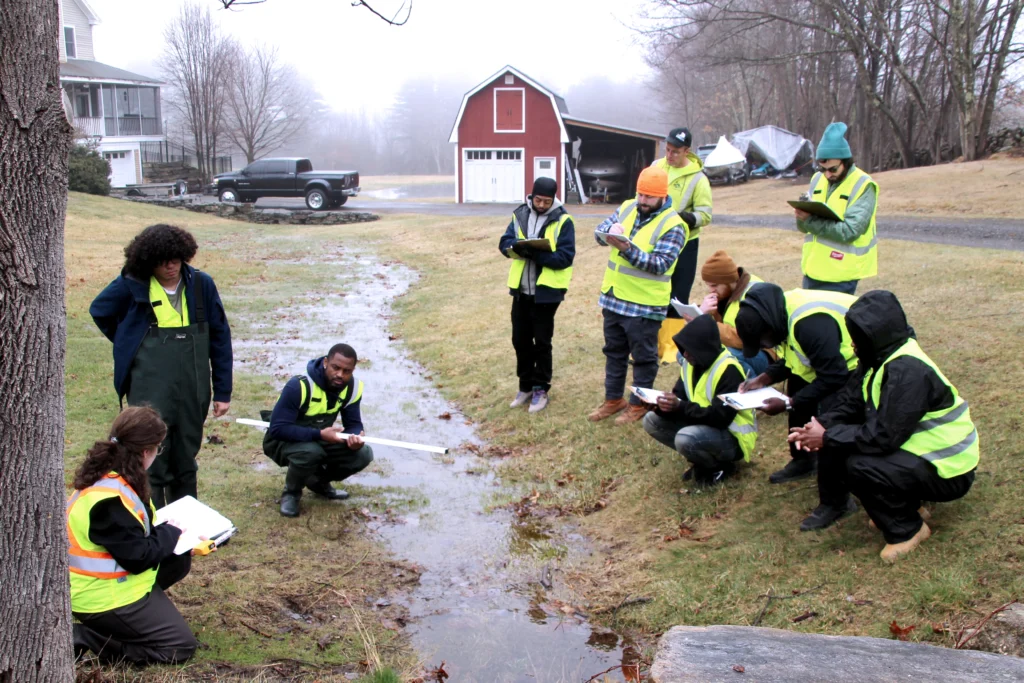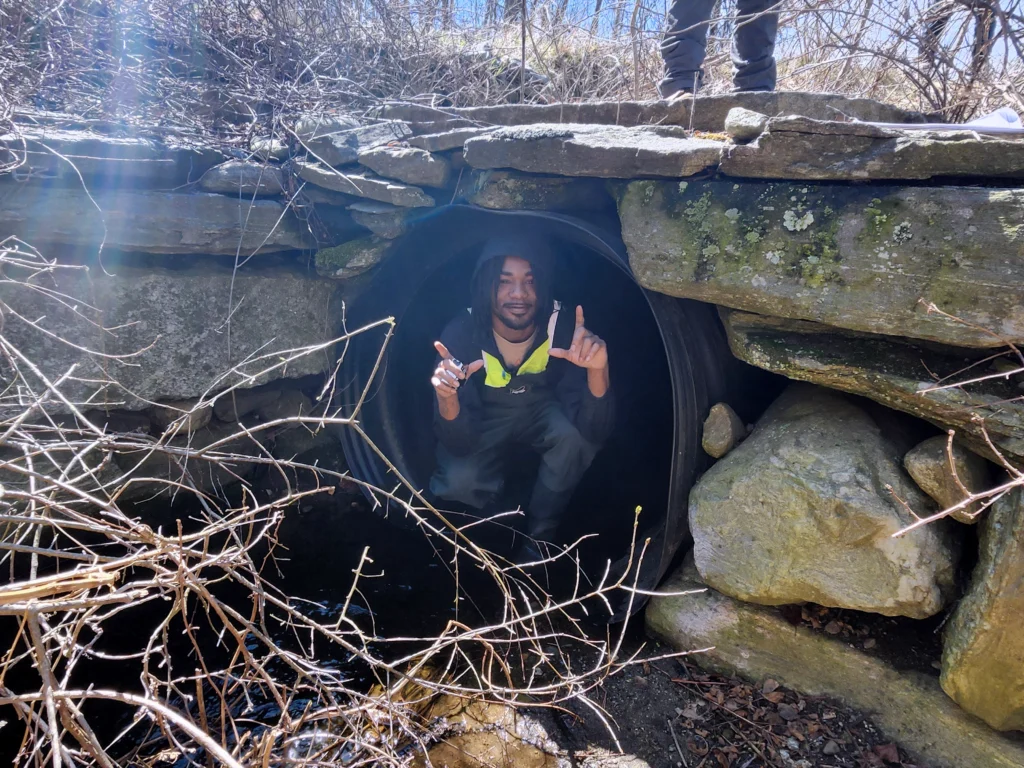Culverts and Aquatic Connectivity
June 20, 2025
OARS River Log | By Zoe Green, Volunteer Eoglogical Restoration Writer and Heather Conkerton, OARS’ Ecological Restoration Coordinator | Published June 20, 2025
Culverts and Aquatic Connectivity
Culverts and stream crossings are essential pieces of infrastructure designed to allow roads, trails, and railways to pass over rivers and streams without obstructing the natural flow of water. However, poorly designed or deteriorating culverts can have significant environmental consequences, impeding water flow and obstructing the passage of aquatic organisms.
Fun Fact: The term culvert likely derives from a blend of French and Dutch words—couler (meaning “to flow”) and vaart (meaning “canal” or “trip by boat”).
Culverts play a crucial role in stormwater management, preventing flooding and maintaining proper water flow. However, when culverts are improperly sized, misaligned, or degraded, they can disrupt aquatic ecosystems, increase flood risks, and obstruct wildlife movement. These barriers are particularly problematic for aquatic organisms such as fish, amphibians, and aquatic insects, which rely on free movement through waterways to spawn, feed, and escape predators.
Why Aquatic Connectivity Matters: Properly functioning culverts are vital for maintaining healthy ecosystems. When stream crossings become barriers, they can significantly impact the migration, reproduction, and genetic diversity of aquatic species. For example, a damaged culvert might create steep drop-offs, high water velocities, or shallow, dry channels that prevent species from passing through. This disruption can isolate populations, making them more vulnerable to environmental changes and reducing their ability to adapt over time.
Identifying Barriers to Aquatic Organism Passage
The North Atlantic Aquatic Connectivity Collaborative (NAACC) has developed a standardized protocol for assessing the passability of culverts and other stream crossings. The NAACC classifies culverts based on their ability to facilitate aquatic organism passage (AOP):
- Full AOP: Structures that allow unimpeded passage for aquatic organisms.
- Reduced AOP: Structures that partially hinder movement.
- No AOP: Structures that significantly obstruct passage.
Culvert Issues That Affect Connectivity
Several factors can classify a culvert as a barrier to aquatic organism passage, including:
- Perched outlets: Elevated culvert outlets that create drops, making it difficult for organisms to move upstream.
- Inadequate sizing: Culverts that are too small or poorly designed, cause high water velocities that impede movement.
- Misalignment with natural stream channels: Improper alignment can disrupt the natural flow and structure of the stream.
- Structural issues: Collapsed or obstructed culverts that block passage entirely.
The Need for Assessment and Action
As of 2015, a total of 347 stream crossings in the Sudbury, Assabet, and Concord (SuAsCo) rivers watershed have been documented and assessed through the NAACC’s data collection effort. This provides a crucial baseline for understanding where barriers exist and how they are affecting aquatic species and ecosystem health.
In 2021, the Central Massachusetts Metropolitan Planning Organization (CMMPO) initiated a region-wide culvert assessment program, which included key areas such as the Nashua, Concord, and French River Basins, among others. Preliminary results show that approximately 43% of the 6,400 culverts assessed in the region were identified as moderate to severe barriers to fish and wildlife passage.
OARS’ Role in Culvert Assessment
OARS (Organization for the Assabet River) is actively working to assess and improve culvert infrastructure within the 36 towns that make up the SuAsCo watershed. Many of these towns lack the necessary resources or staff to carry out thorough culvert assessments, which is where OARS steps in.
The work being done by OARS is critical for the long-term health of the watershed. By identifying and evaluating problematic culverts, we are working to restore river continuity and improve aquatic organism passage, which is key to preserving biodiversity and ensuring ecosystem health.
Currently, OARS is focusing efforts on the town of Berlin, where we’ve partnered with a Spring cohort from the X-Cel Conservation Corps to begin the process of culvert assessment. Volunteers are also being trained to participate in this vital work, helping to foster community engagement and create a sustainable network of local stewards.
Of the 120 potential culverts in Berlin, approximately 96 have been assessed so far. We plan to complete the assessments by the end of the summer and develop a stream-crossing plan that will help the town become “shovel-ready” for future infrastructure improvement projects, including those funded through grants.
Following Berlin, our next initiative will be in the town of Maynard, where we will continue working with the Summer cohort of the X-Cel Conservation Corps and further expand our network of trained volunteers. As the project progresses, we will continue to work alongside local communities to ensure they have the tools and knowledge to maintain and improve aquatic connectivity within their watersheds.


By addressing culvert infrastructure and restoring the natural flow of waterways, OARS is helping to safeguard not only the physical health of the rivers but also the long-term sustainability of aquatic life. This work is integral to maintaining the biodiversity of the SuAsCo watershed and improving water quality for both human and ecological communities.

